Yes, Virginia, there is a Santa Claus!
Although one of the most celebrated Holidays the world over, Christmas traditions vary from country to country. Many secular customs associated with Christmas are an amalgamation of traditions from around the world. Candy Canes and Christmas trees were imported from Germany while the tradition of puckering up underneath the mistletoe and throwing a Yule log on the fire is Scandinavian in origin. The English sent the world Christmas cards, which American born Rudolph the Red-Nosed Reindeer helped to transport them. One of the most famous faces of Christmas is Santa Claus, whom the New York Historical Society once declared to be the patron saint of our own New Amsterdam. These days it would take a Miracle on 34th Street for Santa to leave the North Pole and take up residence in New York.
Yes, Virginia, there is a Santa Claus and he lives in the North Pole, but where exactly does he live? Many countries claim Santa as one of their own. Nowhere is the dispute over where Santa hangs his stocking more apparent than among the Nordic nations with each country staking some special relationship with him. Over time, Nordic Santas have undergone a metamorphosis from guardians of agriculture to the benevolent little gift givers they are today. Due to their shared agricultural past and common beliefs in Norse mythology, what would morph into modern day Santa was once a gang of mythical gnome like figures who were thought to safeguard farms. Like some sort of elfin mafia, they demanded an annual payment for their protection in the form of a bowl of porridge left out on Christmas Eve. A missed payment might prompt an elfin relation resulting in havoc/shenanigans on the farm or even the revocation of protection for the upcoming year.
Although the first rendering of jolly old St. Nick was created during the 1930s for a coco-cola advertisement by Haddon Sundblom, a Swedish American Artist, Nordic nationals were slow to adopt this Americanized version of Santa. However, the American Santa has begun to appear on the Nordic Christmas circuit as of late and although similar in dress, he is trimmer than his more indulgent American cousin. Additionally, the Nordic Santa avoids a rap sheet of breaking and entering via chimneys, opting for a more direct route through the front door. He arrives via a sleigh, which at various times, has been powered by reindeers, huskies, and even a Yule Goat.
Finns are fanatical about Santa. They believe that Santa or as he’s known locally by his Finnish stage name, Joulupukki, lives with the ‘Missus’ and his helpers, the joulutonttu, in the village of Rovaniemi in Northern Finland. The town of Rovaniemi holds trademarks from the EU, US, and Japan designating it as “The Official Hometown of Santa Claus®.” His year round residence is conveniently located just a few miles from the airport where tourists from all over the world come to visit Joulupukki at his Arctic Circle headquarters.
Although Joulupukki makes his deliveries via a sleigh drawn by reindeer, his reindeer do not possess the gift of flight. This allows Joulupukki and his entourage to maintain the Christmas spirit by skipping the maddening TSA lines to make it home in time for après-Christmas R&R at a sauna, a popular local Christmas activity.
Danes concede that Julemanden, or as he’s known by his Danish alias, does not live in Denmark proper. He does, however, maintain a pied-à-terre in the Pixie Forest, which he uses when he attends the World Santa Claus Congress, an international conference of professional Santas. The Congress is the United Nations of the Christmas world as it is where official Christmas business, such as declaring Greenland to be Santa’s official residence, is conducted. The event is by invitation only and all members must pass muster on the naught and nice list to gain admission. The Finnish Santa knows this all too well as he once was placed on the naughty list after he declared he would only attend if the Congress acknowledged that he was the one true Santa.
The Swedes claim that Jultomte, Santa’s Swedish nom de plume, lives in Mora, a small town in Northern Sweden where Tomteland, a modest sized Santa theme park is located. Compared to their neighbors, Swedes are the least obsessed with whether Jultomte glides through customs and immigration with the use of a Swedish passport. The Swedes may be less besotted about Santa’s domicile since he shares the spotlight with Donald Duck when Walk Disney’s special “from All of Us to All of You” is televised. This Christmas Eve broadcast brings the country to a standstill as families gather around the television to watch this classic.
As Finland embarks on its quest for world domination, Danes and Greenlanders concur that Julemanden lives in a secret castle on top of a mountain in Greenland where he and his elves make presents with his magic toy machine while debating whether to wish recipients Merry Christmas in Danish, Glædelig Jul, or Juullimi Ukiortaassamilu Pilluarit in Greenlandic. Instead of employing a team of reindeer like his doppelgangers do, he relies upon 12 Greenlandic huskies, each one named after a different month of the year, to pull his sleigh.
Greenland processes approximately 50,000 letters to Santa a year. All letters are delivered to Santa’s giant, red mailbox, which has the distinction of being the world’s largest mailbox. However, even Santa isn’t recession proof in these parts. Like a scene out of the Grinch Who Stole Christmas, he recently faced the prospect of being unable to keep up with his Christmas correspondence, as he could not afford the return postage. Luckily, Christmas was saved when a few of his helpers spotted Santa the postage.
Santa Claus, also known as Julenissen in Norway, took up residency in Drøbak, Norway’s Christmas capitol, located 20 miles South of Oslo. His house, known as the Christmas House, is located in the town square, and is open to visitors. Norwegians believe that Julenissen and the Nissen work in tandem to deliver gifts. Norwegians believe that after Christmas Julenissen sleeps for weeks to regain his strength. In between Boxing Day and New Year’s Eve, when Santa is in deep hibernation mode, children dress incognito as little nissers and go door to door in their neighborhood and sing Christmas carols to receive treats, much the same way American children go trick or treating on Halloween.
Iceland dominates the Santa contest, if for no other reason than because of their sheer numbers. Icelanders lay claim to thirteen Santa Clauses, or Jólasveinar, each of whom is named after their favorite activity or food with such names as Ladle Licker, Door Slammer, and Candle Beggar. The Jólasveinar are believed to be the sons of two trolls, Grýla and Leppaludi, both of whom have been part of Icelandic lore since the 13th century, even making an appearance in the Icelandic sagas. The Jólasveinar were once seen as frightening creatures and were used to elicit good behavior from children by garnering a reputation for eating naughty children. This gnomatic clan instilled such fear in the local populace that in 1746, the King of Denmark, then ruler of Iceland, banned his subjects from recounting their tales.
Over the years, the Jólasveinar have transformed from a nightmarish cartel of trolls into more charitable creatures. Today they arrive one by one each day starting the morning of December 12 until Christmas Day. The Jólasveinar will leave small gifts in the shoes of well-behaved children who place their shoes in their windowsills, while the naughty ones receive a potato.
Although countries that hug the Arctic Circle may have the most meritorious claims to Santa, his lineage is unimportant as he transcends nationalities and borders. What is important is the spirit of generosity and hope in those who dare to still believe.

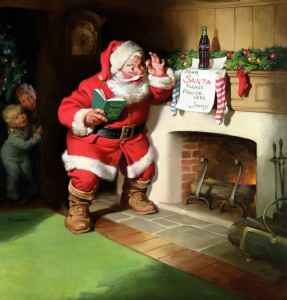

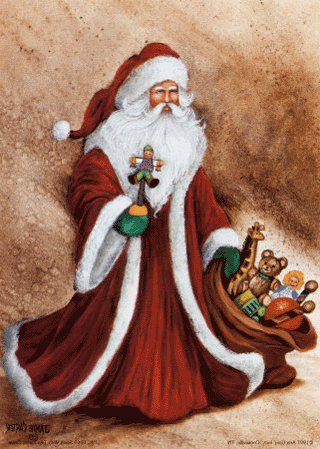

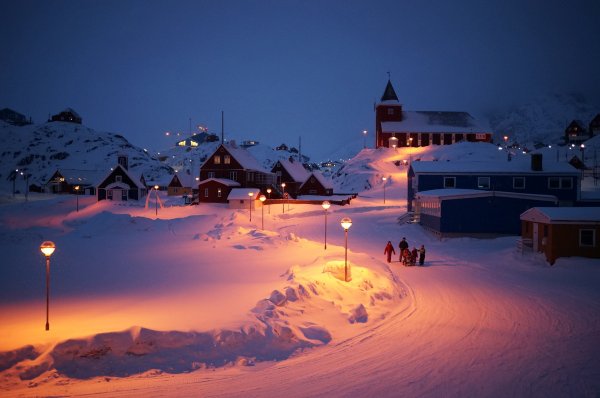
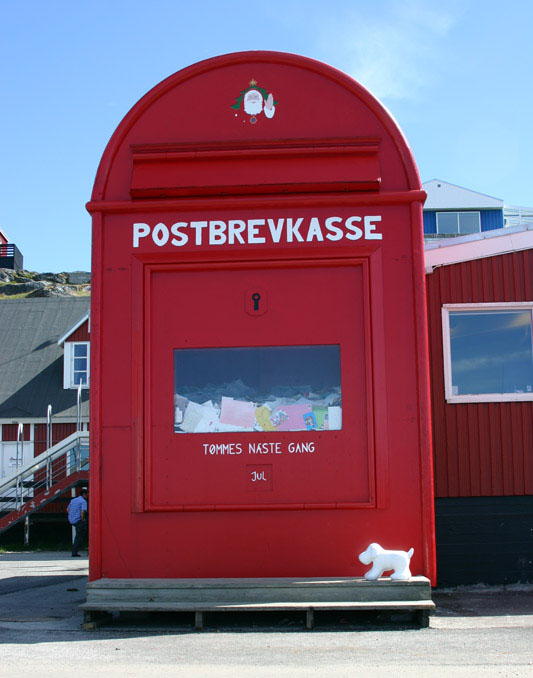

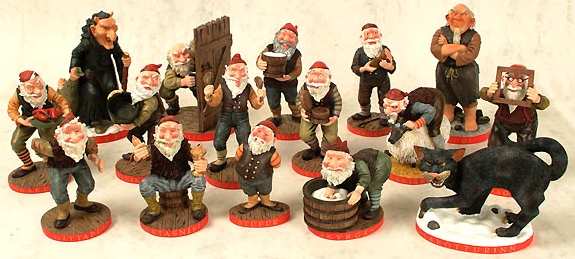
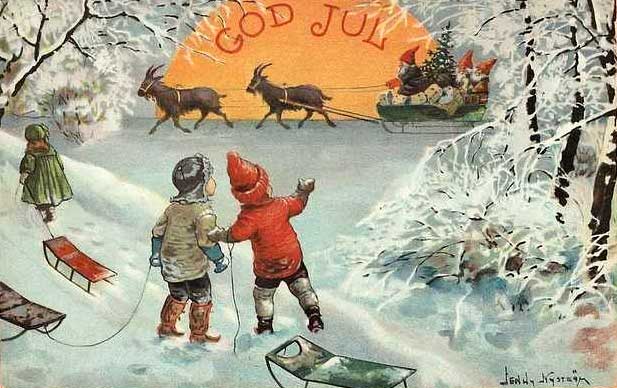





Leave a Reply